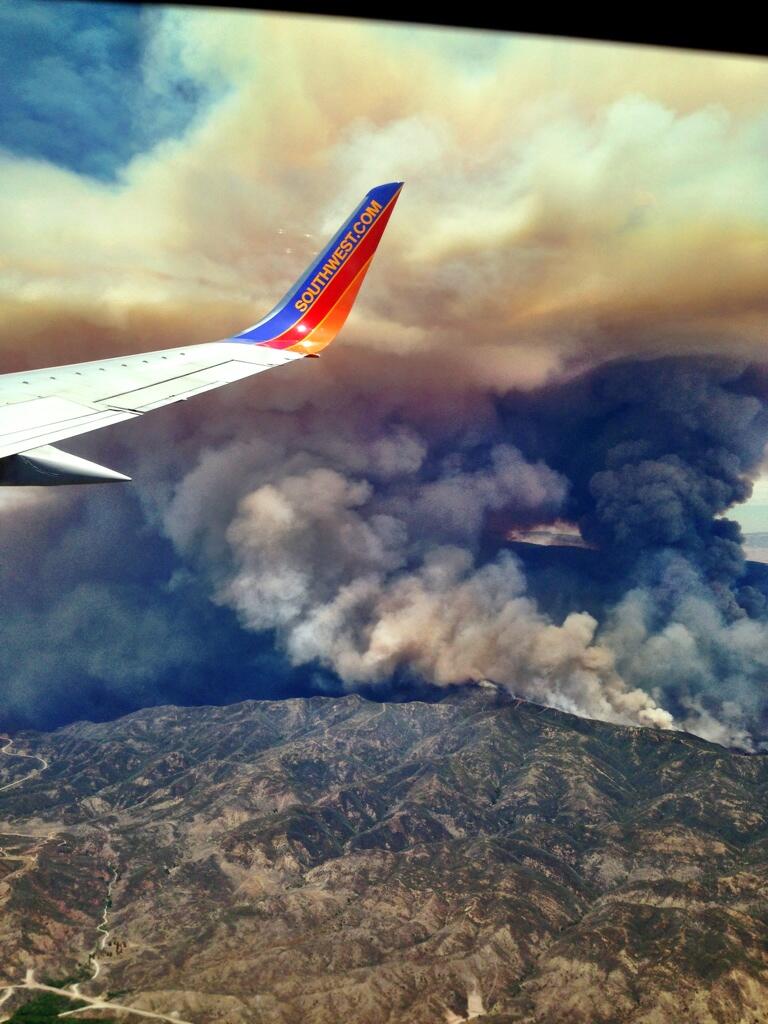 Forest Service Chief testifies on wildfire response capabilities, challenges
Forest Service Chief testifies on wildfire response capabilities, challenges
National Cohesive Wildland Fire Management StrategyThe Forest Service estimates a total of almost 400 million acres of all vegetated lands are at moderate to high risk from uncharacteristically large wildfires. Working with the Department of the Interior, the Forest Service has involved the entire wildland fire community in developing a long-term National Cohesive Wildland Fire Management Strategy. The strategy has three components: restoring fire-adapted ecosystems, building fire-adapted human communities, and responding appropriately to wildfire.
From fiscal year 2001 to fiscal year 2011, the Forest Service treated about 27.6 million acres, an area larger than Virginia. The agency focuses treatments on high-priority areas in the Wildland-Urban Interface, those areas where human development abuts wildlands.
 |
| View from @SouthwestAir flight of the Powerhouse Fire Credit: TaraTV1 Tara Hitchcock1 Jun |
Most of America’s landscapes are adapted to fire. Wildland fire plays a natural and beneficial role in many forest types. Where suppression is needed to protect homes, property and resources the Forest Service focuses on deploying the right resources in the right place at the right time. Using improved decision support tools, fire managers are making risk-based assessments to decide when and where to suppress a fire—and when and where to use fire to achieve management goals for long-term ecosystem health and resilience.
Impacts of increased fire costs
Costs of fire suppression have increased to consume nearly half of the entire Forest Service budget. In fiscal year 1991, fire activities accounted for about 13 percent of the total agency budget. In fiscal year 2012, it was more than 40 percent. Since fiscal year 2000, the 10-year average cost has risen almost every year – from a little more than $540 million to more than $1 billion in 2010 and beyond.
During the past 10 years, the Forest Service has made fire transfers from non-firefighting accounts to pay for fire suppression costs six times, ranging from a low of $100 million in fiscal year 2007 to a high of $999 million in fiscal year 2002, and totaling approximately $2.7 billion. Of that total, $2.3 billion was repaid but led to disruptions within many Forest Service programs.
Each time the agency transfers money out of accounts to pay for fire suppression there are significant and lasting impacts across the entire Forest Service. Not only do these impacts affect the ability of the Forest Service to conduct stewardship work on national forests, they also affect agency partners, local governments and tribes.
Firefighting resources
The Forest Service has the capability to protect life, property and natural resources while assuring an appropriate, risk-informed and effective response to wildfires that is consistent with land and resource management objectives. The agency does this through not only federal resources, but also with employees from states, tribal governments and local governments, contract crews and emergency or temporary hires.
Under the President’s budget for fiscal year 2014, suppression capability will be comparable to previous years. However, the Forest Service recognizes that given limited budgets, maintaining this capability will present challenges. With greater mobility and with agreement to focus assets on high risk areas, it is likely that high levels of initial attack success will continue.
Restoring ecosystems
The Forest Service is restoring the ability of forest and grassland ecosystems to resist climate-related stresses, recover from climate-related disturbances, and continue to deliver important values and benefits.
Restoring fire-adapted ecosystems often requires treatment or removal of excess fuels, reducing tree densities in uncharacteristically crowded forests and application of fire to promote the growth of native plants and reestablish desired conditions. Fuel treatments change fire behavior and provide more options to engage a fire. This can decrease fire size, intensity, divert fire away from high value resources, and can result in reduced suppression costs.
Hazardous fuels treatments
The Forest Service Hazardous fuels treatments also produced 2.8 million green tons used for energy. In fiscal year 2012, 20 biomass grant awards from the Woody Biomass Utilization Grant program totaling approximately $3 million were made to small business and community groups across the country. This $3 million dollar investment leveraged over $400 million dollars of Rural Development Grants and Loan Guarantees for woody biomass facilities. The Woody Biomass Utilization Grant program has contributed to the treatment of over 500,000 acres and removed and used nearly 5 million green tons of biomass at an average cost of just $66 per acre. Grantees also reported a combined 1,470 jobs created or retained as a result of our grant awards.
Adapted Information Source: http://www.unitedstateshelitackfirefighters.com/2013/06/forest-service-chief-testifies-on.html
---------------------------------------------
No comments:
Post a Comment
CAL FIRE NEWS LOVES COMMENTS...
- Due to rampant abuse, we are no longer posting anonymous comments. Please use your real OpenID, Google, Yahoo, AIM, Twitter, Flickr name.